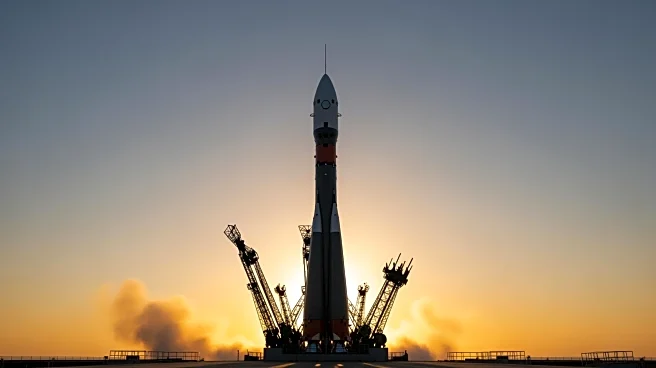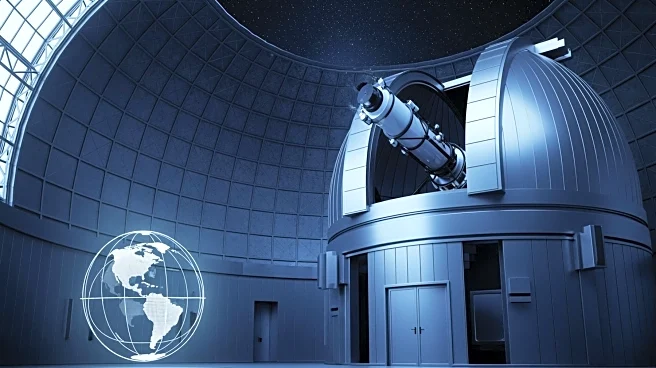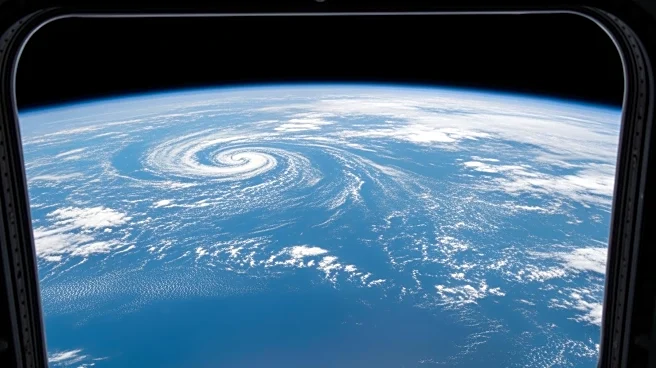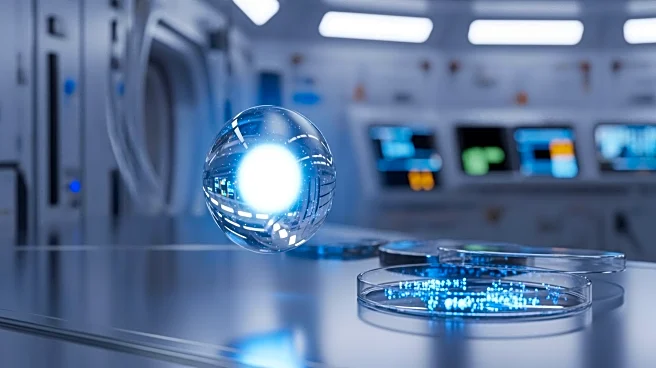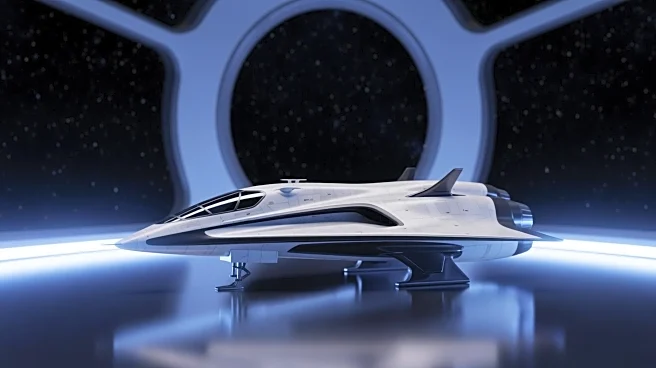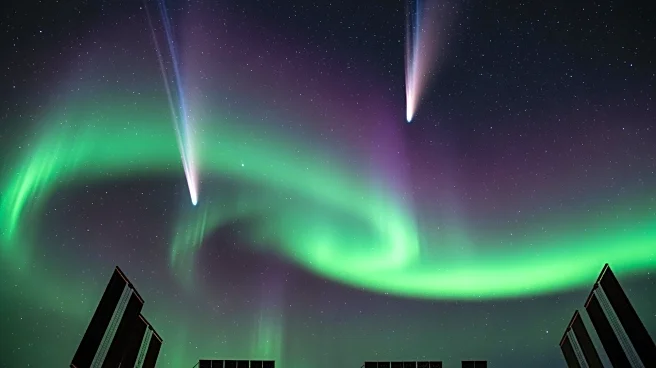What's Happening?
A Soyuz rocket has been positioned at the Baikonur Cosmodrome in Kazakhstan, readying for a Thanksgiving Day launch of three new crew members to the International Space Station (ISS). The crew includes
NASA astronaut Chris Williams and Roscosmos cosmonauts Sergey Kud-Sverchkov and Sergei Mikaev. They are scheduled to lift off aboard the Soyuz MS-28 spacecraft at 4:27 a.m. EDT on November 27, 2025. The spacecraft will orbit Earth twice before docking at the ISS's Rassvet module at 7:38 a.m. the same day. This mission marks the beginning of an eight-month space research endeavor. Concurrently, the Cygnus XL spacecraft, part of the Northrop Grumman-23 commercial resupply services mission, was detached from the ISS to make way for the Soyuz MS-28's arrival. The Cygnus XL will remain connected to the station's Canadarm2 robotic arm until December 1, after which it will be reattached to the ISS until March 2026.
Why It's Important?
The launch of the Soyuz MS-28 spacecraft is significant as it continues the collaborative efforts between NASA and Roscosmos in space exploration and research. The mission will contribute to ongoing scientific studies conducted in microgravity, which are crucial for understanding various physiological effects on humans and developing technologies for future space missions. The coordination between NASA, Northrop Grumman, and Roscosmos ensures the safe docking and undocking of spacecraft, highlighting international cooperation in space operations. The research conducted during this mission could have implications for improving human health and technology both in space and on Earth.
What's Next?
Following the docking of the Soyuz MS-28, the crew will begin their research activities aboard the ISS. The Cygnus XL spacecraft will be reattached to the ISS on December 1 and will remain until March 2026, when it will depart and dispose of waste during its re-entry into Earth's atmosphere. The crew will engage in various experiments, including studies on cardiorespiratory fitness, muscle strength, and fluid physics in microgravity. These activities are part of broader efforts to prepare for long-duration space missions and enhance our understanding of living and working in space.
Beyond the Headlines
The mission underscores the importance of international collaboration in space exploration, which not only advances scientific knowledge but also fosters diplomatic relations between participating countries. The research conducted on the ISS has the potential to lead to breakthroughs in medical and technological fields, benefiting society at large. Additionally, the mission highlights the logistical challenges and precision required in space operations, emphasizing the need for continued innovation and cooperation in the aerospace industry.
